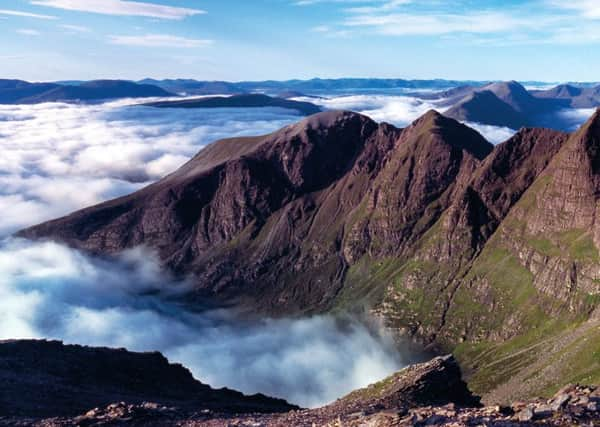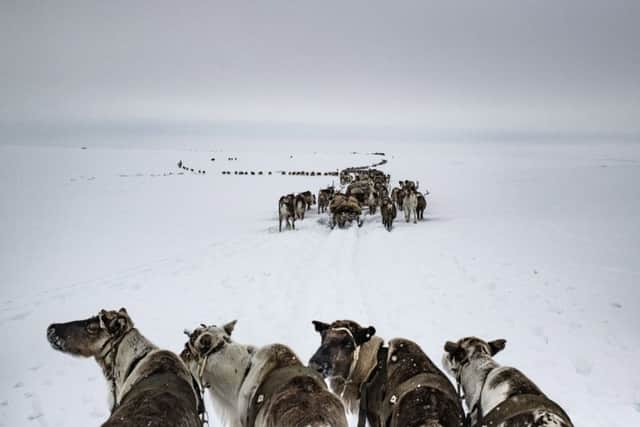Books for Christmas: The Best Photography Books


Perhaps this year’s best argument for the continuing survival of the photography book is Arctic: New Frontier, by Yuri Kozyrev and Kadir van Lohuizen (Reliefs Éditions/Fondation Carmignac, £35). Produced thanks to a e50,000 grant from the Carmignac Photojournalism Award, the book is a record of a remarkable series of journeys undertaken by the duo, which saw them travel 15,000km through some of the harshest and most inaccessible regions on Earth. Koyzrev first explored Russia’s Arctic ports, including Murmansk, where the world’s first floating nuclear power station is being built, then photographed the nomadic Nenets people as their annual migration with their reindeer herds was interrupted for the first time in history by thawing permafrost. Van Lohuizen, meanwhile, started his journey on the Norwegian island of Spitzbergen and then traced the route of the Northwest Passage – once just a mariners’ fantasy, but now, thanks to the melting ice, the shortest sea route between Europe and Asia. The mosaic of carefully-selected pictures they present here – of enormous sinkholes caused by melting permafrost in Russia; of coastal villages on the brink of being flooded by rising sea levels in Alaska; of military personnel in Canada and Norway training for Arctic warfare; and of mines and oil refineries the size of cities – show how events in these cold, inhospitable places will have an enormous impact on human life in this century, even as they consistently fail to make the TV news.
The Carmignac award is given each year to fund “investigative photographic reports on a region of the world where fundamental rights are threatened.” It was only founded in 2009, but if it had been around in the 1930s then the great American photographer Dorothea Lange would surely have been in the running, in particular for her pictures of the migrant workers who flocked to California from the Dustbowl states during the Great Depression, and for her pictures of the black agricultural workers of the “Old South,” where she found that race and power relations were “deeply rooted in the past” and where “the sharecropper had replaced the slave.” Edited by Alona Pardo with Jilke Goldbach, Dorothea Lange: Politics of Seeing (Prestel, £37.50) is a fantastic resource for anyone interested in Lange’s work, or, indeed, in the social history of the United States in the mid-20th century. As well as contextualising some of Lange’s better-known images, such as her iconic Migrant Mother of 1936, the editors also include generous sections on her later work – photographs of the booming shipyards of Richmond, California during the Second World War and of the prosperous denizens of the “New California” just after it – showing how she charted America’s dramatic transition from destitution to prosperity over a few short decades.
Advertisement
Hide AdMore subtle changes are recorded in William E Crawford’s hugely evocative labour of love Hanoi Streets 1985-2015 (Images Publishing, £40). The product of multiple visits to the city over three decades, the book is a celebration of its vibrant street life but also a fascinating insight into its architectural evolution. Crawford’s earlier visits mostly show the Beaux-Arts facades built by the colonial French in a state of elegant, atmospheric decay, but by the mid-1990s, rather than rejecting this style outright, it becomes clear that the locals have instead come to regard it as their own, building new structures that incorporate distinctive aspects of the French originals, notably semi-circular balconies and neo-classical columns.


Don McCullin may have made his name as a documentary photographer, covering the Vietman War and the Troubles in Northern Ireland, but in his later years (he is now 83) he has turned his attention to landscapes. In The Landscape (Jonathan Cape, £50) he succeeds in making the art of composition seem effortless on page after page. A picture of an Indonesian man in silhouette paddling a dugout canoe, framed by a great halo of illuminated clouds, could not have been more delicately balanced if he had painted it. Similarly, a shot of a man riding a camel near the ancient city of Meroë in Sudan, on the east bank of the Nile, is almost too perfect in its alignment of pyramids, sand dunes, subject and sky. The bulk of the pictures in this book were taken near the artist’s home in Somerset and these show he can find poetry in something as unremarkable as a freshly-ploughed field under a dark, wintry sky. However, The Landscape doesn’t represent a total retreat from the front line: there are also stark, powerful images of the destruction of Palmyra by Isis and of bombed tower blocks in the devastated city of Homs.
Still on landscapes but closer to home, in Wild Light (Vertebrate, £25) the award-winning Glasgow-based photographer Craig Aitchison has produced a truly jaw-dropping collection of images, offering dramatic new angles on well-kent views and also adding a few lesser-known locations to the mix. The real secret of his success, though, is in capturing the wild light of the title. Every image here feels as if it has been made at a moment of “peak illumination,” if such a thing exists; five minutes before or after, you sense, and it just wouldn’t have been the same. Given how fleeting these magical moments can be –particularly in Scotland – this book isn’t just a tremendous technical achievement, it’s also the product of an immense amount of hard graft.
Published to accompany the opening of the V&A Photography Centre in London in October, Cameraless Photography by Martin Barnes (Thames & Hudson, £24.95) is a timely reminder that, for all the digital technology now at our disposal, there are also simpler, purer ways of making a photograph. As well as looking at the 19th century experiments of pioneers such as Henry Fox Talbot, who created negative images of plants by placing them onto light-sensitized paper and then exposing them to the sun, it also takes in Man Ray’s photograms of the 1930s and the cameraless work of contemporary artists including Garry Fabian Miller and Susan Derges, to show that unmediated “drawing with light” is still very much alive and well as a form of artistic expression.
And finally, three Scottish photography books already covered in these pages this year are worthy of a second mention here: Nadir Khan’s Extreme Scotland (Vertebrate, £25) is a spectacular collection of extreme sports pictures taken with both style and precision; Eilean – The Island Photography of Margaret Fay Shaw (Birlinn, £25) is a fitting tribute to a remarkable woman who captured traditional ways of life in the Hebrides just when they were on the point of being swept away; and Alex Boyd’s St Kilda: The Silent Islands (Luath, £20) is a thought-provoking, “warts and all” portrait of the archipelago which pays as much attention to the islands’ brutalist military installations as it does to their precipitous cliffs and to the picturesque abandoned houses at Village Bay. - Roger Cox